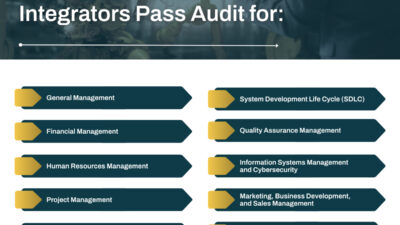Legalities: Payment cycle provisions are common in automation and integration contracts. Four strategies can help your company’s cash flow.

The right contract clauses can improve a company’s cash flow—whether you are making or receiving payments. “Payment cycle” provisions are common in automation and integration contracts. As you are likely seeing in the market, the historic “net 30” terms in commercial agreements are becoming harder to obtain. Companies making payments for completed services and deliverables are pushing for longer deadlines—sometimes as long as 90 or more days from invoicing.
Like using a credit card (and paying it off monthly), this is a way in which companies buy automation services and products and are essentially obtaining short-term, interest-free loans for their projects from their vendors.
Sometimes, long payment cycles are an indication a purchaser is experiencing financial difficulties. Other times, such cycles are a function of burdensome internal approval processes or a company knowing it can use its leverage to obtain very favorable payment deadlines. Sometimes, it’s both scenarios.
If you are the seller, four strategies can be used to get paid for completed work as quickly as possible:
1. Negotiate shorter payment deadlines
The most straightforward method to get paid faster, of course, is to shorten the payment deadlines. Often, customers are willing to consider reducing particularly long payment cycles if the issue is presented to them in the right way. You can explain that you are unable to obtain corresponding payment cycle terms from your own vendors, meaning you would have to “come out of pocket” for the project for long periods of time. Many customers are sensitive to this cash-flow problem.
2. Carve-out portions of the contract amount
If a customer is unwilling to shorten the payment deadline in general, you may want to consider “carving-out” certain portions of the contract amount for a shorter payment cycle. For example, if you are required to provide an expensive piece of third-party hardware or equipment for the project, you may be able to get a customer to agree to have the costs for the item separately invoiced on payment terms that are within the deadline established by your agreement with the third-party vendor. This can prevent you from being “caught in between” two large corporations using their market share to obtain unreasonably favorable payment cycles.
3. Insert a down payment or mobilization fee
If you know long payment cycles will be required, you may want to “front-load” your fees in the agreement. You can use this up-front payment to keep your out-of-pocket expenses to a minimum as work progresses. Such terms also decrease risk of non-payment for work already completed, but not yet billed or paid. However, you should be careful not to misrepresent such early payments.
4. Invoice more often
Another effective strategy in mitigating the risk of long payment cycles is to invoice more frequently. Instead of your usual monthly invoices, will a customer accept weekly or bi-weekly invoices? While the deadline for your receipt of payment on each of these invoices may still be set out far in advance, more frequent invoicing will increase cash flows for the project and decrease the amount of payments outstanding at any point in time.
Have the costs for expensive third-party equipment invoiced separately on payment terms within the deadline established by third-party vendor agreement.
If you are the purchaser, you can flip these strategies around. For example, you could propose a shorter payment cycle for services (in recognition of the employee salary payment cycle), but only permit invoicing for equipment once it has been delivered and passed a site acceptance test (SAT).
It also might be possible to withhold a certain portion of the contract price until after final acceptance of the entire system and a successful start-up period. Invoicing also could be set on a longer cycle through the use of a milestone billing provision.
Regardless of which side of the payment cycle you are on, you may be able to ensure a steadier cash flow for your next project by using these contract negotiation techniques.
Brian Clifford is a partner in the automation and robotics practice of Faegre Baker Daniels, a law firm in the U.S., U.K. and China. Edited by Mark T. Hoske, content manager, Control Engineering, CFE Media, [email protected].
KEYWORDS: Legalities, contract payment terms
Contract payment terms can improve how payments improve cash flow.
Shorter payment deadlines can improve cash flow.
Expensive equipment might be invoiced separately.
CONSIDER THIS
How is your automation-industry company aiming to improve cash flow?



